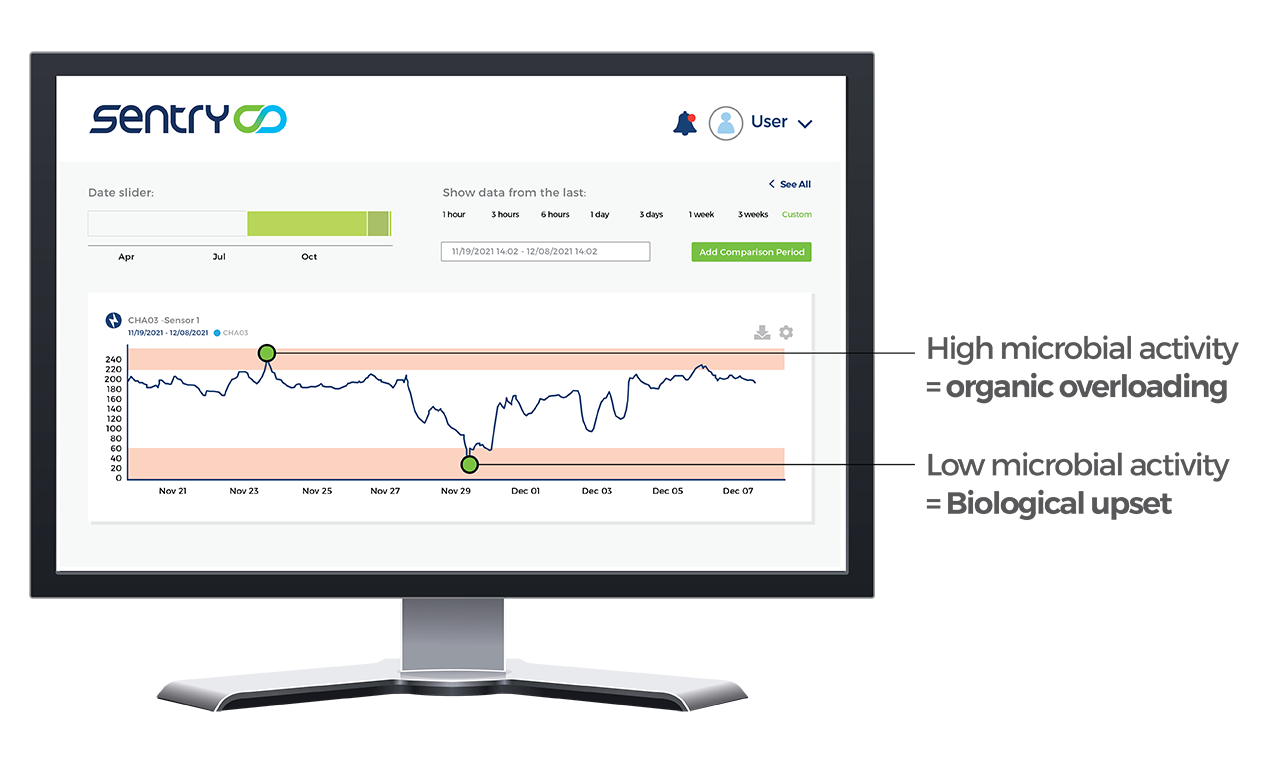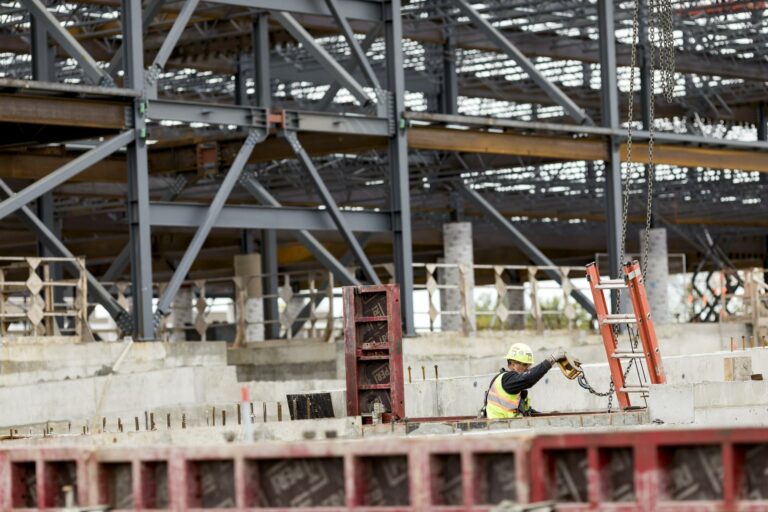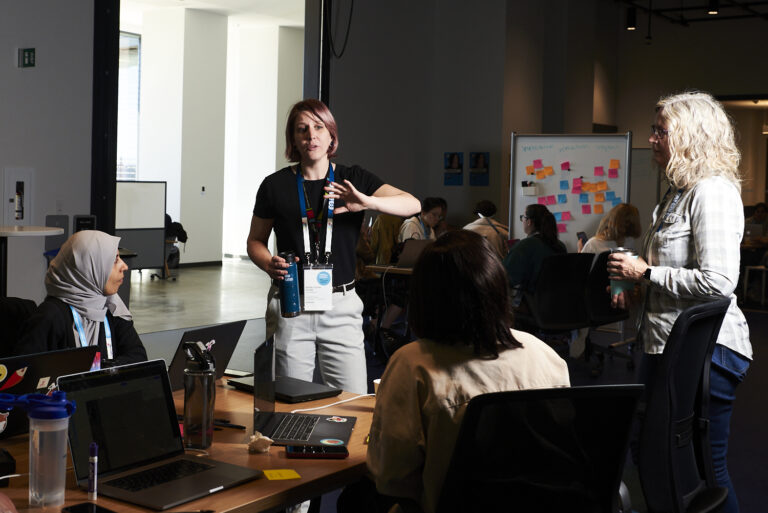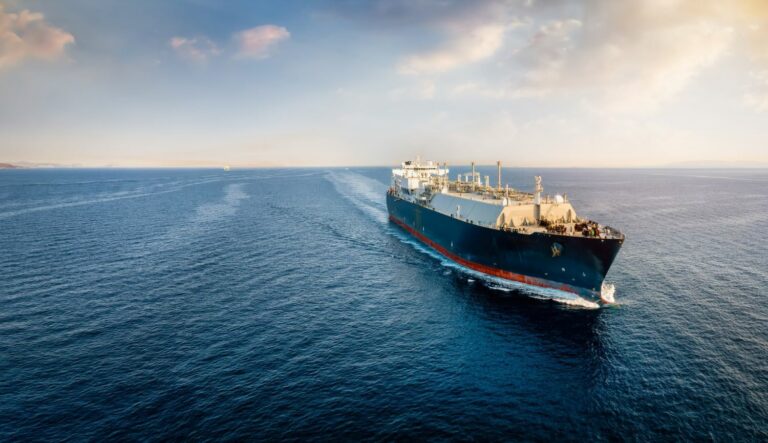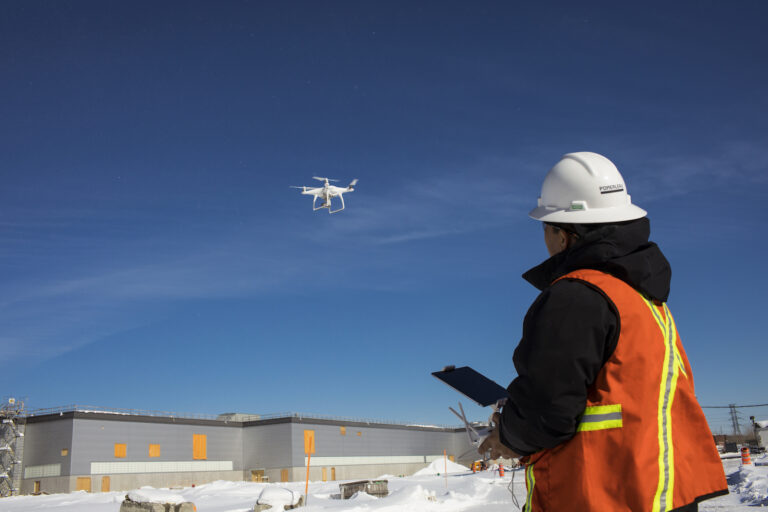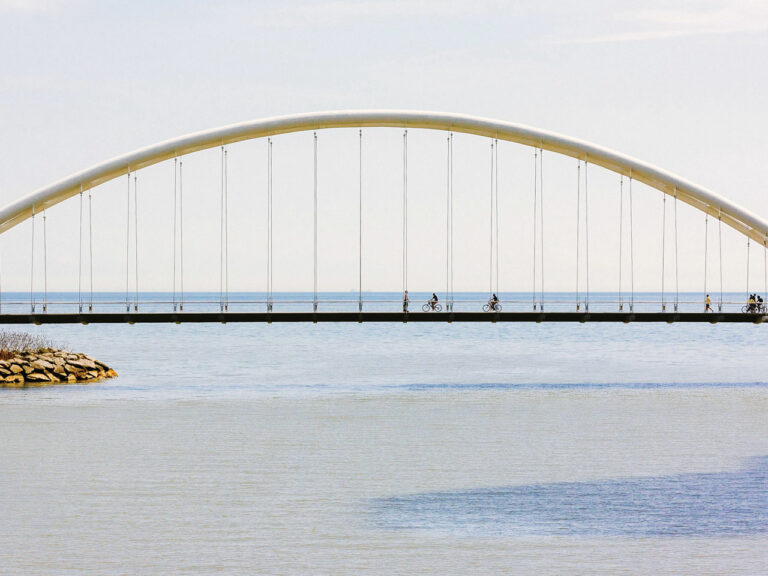Problem Statement: A client in Frankfort, Kentucky was having problems with intermittent toxic shock and organic overloading to their wastewater treatment plant. These changing wastewater conditions were thought to be caused by a local distillery and resulted in biological imbalance events, and periodic treatment issues. Existing tools for monitoring incoming wastewater were costly and required significant operator effort to install and maintain.
The Frankfort wastewater treatment facility serves a population of roughly 30,000 people. The facility also has significant industry in the town (large distillery 150 yards upstream of the plant) and also receives landfill leachate wastewater once a week. The facility is also a combined sewer overflow (CSO) and holds storm water in a series of holding basins that are tied to the collection network.
Based on this the operators believed the industrial client and potentially the heavy rain events were having a negative impact on biological treatment performance.
The plant is a relatively conventional Kentucky wastewater treatment facility with the incoming wastewater going through a bar screen, grit removal, 3 oxidation ditches, 4 clarifiers and final ozonation.
They have been impacted by a series of high organic loading periods entering the facility and have had on occasion to run their belt press consistently for over a month to keep up with the solids production. They have also been impacted by toxicity in the wastewater, where they have arrived at the plant in the morning to find their oxidation ditches have turned black, resulting in poorly performing biological treatment.
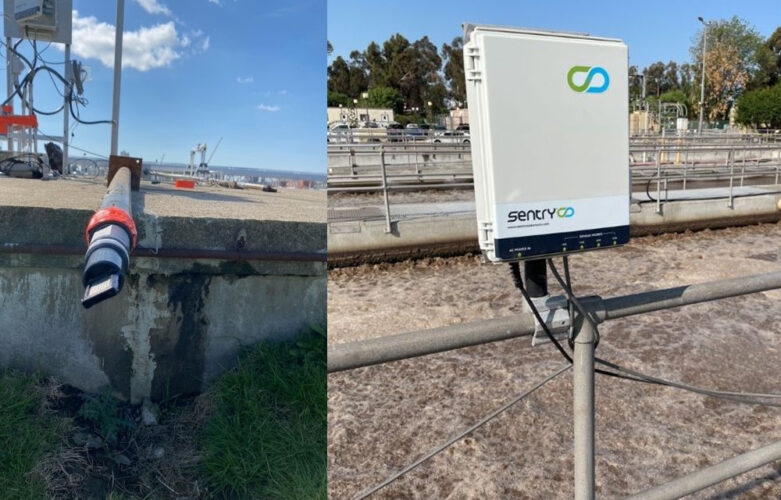
The sensors were received by the regional manufacturers representative (Pelton Environmental) and installed at the facility. Sensors were installed in an influent location post bar screen to profile the incoming wastewater stream. These sensors are pre-inoculated by SENTRY so, once they are placed in the wastewater will respond to the changing conditions. The probes were installed in 4 hours, with the signal going straight to an online dashboard for easy monitoring by the client, regional representative and the SENTRY technical support team.
Almost immediately the client could begin to identify toxic shock and heavy rain events and see the impact these events had on biological treatment at the facility. Maintenance was identified by the client as being very minimal. There is no calibration of the sensor and little to no regular maintenance required for the sensor once it was installed.
Supported by the SENTRY technical team it became clear that high organic loading events and periodic toxic events were identified primarily on Wednesdays. The facility shared the data with their broader wastewater collection team and realized that every Wednesday was the day that (1) they would pump out various CSO holding tanks that were being washed down in biocide and (2) they would receive trucks full of landfill leachate.
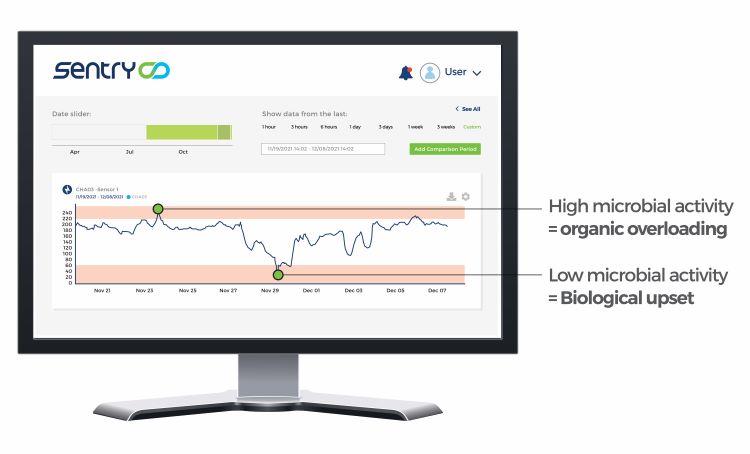
Key benefits and next steps: Based on the data provided by the SENTRY signal, the facility can now quantify the impact of various loads coming into the plant and identify when they are receiving problem waste streams. They have the capacity to bypass problem waste streams and integrating the SENTRY signal for real-time wastewater diversion is the next step forward. They have also reduced the quantity of biocide being added to their CSO holding tanks when they are washing down and discharging back into the collection system. The influent sensor has now been installed at this site for over 18 months. In this time the sensor has required no cleaning and been reliably flagging key periods of organic overloading and wastewater toxicity.

